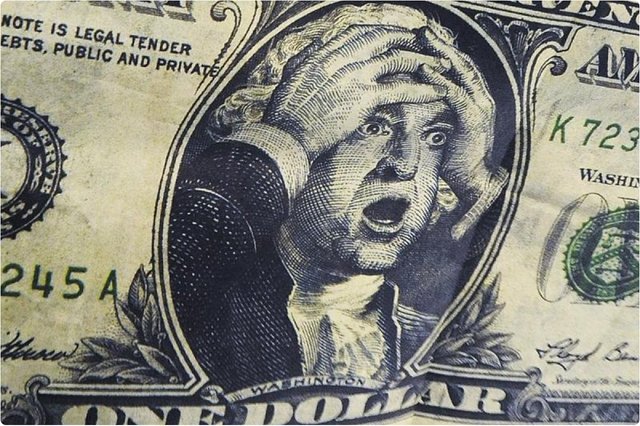5 large Bitcon of crises : WHAT HAVE WE LEARNED FROM THEM?
Welcome to steemit;
September was full of events for bitcoin owners: the digital currency started jumping to a record high of $ 5,000 before losing nearly 40% of its value, and it was an impressive wreck. Now, the Crypto currency has recovered and is trading at $ 4,450 (during the preparation of this material). To present this in context, the Fortune publication provides a detailed analysis of the September crash and four other major price shocks, as well as possible explanations for them. In general, this range of questions can give some idea of why bitcoin is so volatile and can it survive in the long run.

The collapse of the market in April 2013
- What happened: in the spring of 2013, the price of bitcoin suffered a terrible collapse, falling from $ 233 to $ 67 per night - by 71%. Then it took seven months to recover.
- Why this happened: the collapse in April 2013 occurred after the first big "combing" bitcoin, when it was just merging into the main trends of financial life. Until 2013, the currency of the currency never crossed the mark of $ 30, but the efforts of the media helped him to significantly exceed the $ 200 mark. The crash that followed the two smaller shocks in March also opened the veil of the future "speculative prolificacy" of this crypto currency. (Others attribute this to the collapse of Mt. Gox, the most popular exchange then for buying and selling bitcoin).
Bubble of 2013
- What happened: most of 2013 bitcoin kept at $ 120. Then in the fall the rate jumped ten-fold: bitcoin peaked at $ 1150 at the end of November; but the party ended abruptly, and prices fell below $ 500 in mid-December. After that, it took years for the bitcode to reach the $ 1000 bar again.
- Why it happened: the crazy price, which began in late 2013, seems to have been a classic bubble, when amateur investors first attacked bitcoin. Insanity was helped by regulators who more positively began to evaluate bitcoin (in the very first years most considered it criminal - if someone had heard of it then), and it became easier for ordinary people to buy bitcoin on American exchanges such as Coinbase. When the bubble burst, the prices would probably have recovered fairly quickly, but this did not happen due to further events.
The trouble with Mt. Gox in 2014
- What happened: the price of bitcoin reached its largest profit after the bubble in 2013, but in February the price fell from $ 867 to $ 439 (by 49%). This caused a period of depression for bitcoin, which lasted until the end of 2016.
- Why it happened: the February collapse occurred after Mt. Gox - an old bitcoin stock exchange, a favorite place for crypto currency holders, - announced that it was hacked. On February 7, the exchange stopped withdrawing funds, and later it turned out that the thieves had taken 850,000 bitcoins (which today would cost about $ 3.5 billion). The incident, which created existential doubts about the safety of bitcoins and adversely affected its liquidity, may, for a long time, damage the value of the currency.
Summer sale of 2017
- What happened: look at the smart days of 2017. In early January, bitcoin for the first time in several years crossed the $ 1000-th line and began to rise at a crazy pace. By June, the currency had surpassed the $ 3000 mark, but then suddenly rebounded, dropping 36% to $ 1,899 in mid-July.
- Why it happened: even when bitcoin made a new boom, many were worried that something was wrong with the code behind the scenes. In particular, bitcoin was slow compared to other crypto-currencies, such as lightcoin and etherium, and its main developers could not agree on how to update the software. This highlighted the outlook for the "fork" with two versions of the canonical blockade of bitcoin, as well as the possibility of future splits, which in turn caused sharp market fluctuations and a significant price drop. Ironically, this fork in August materialized in the form of a competing Bitcoin Cash, but it does not seem to have caused long-term harm to bitcoin.
Great Chinese cold
- What happened: after fears about the fork were confirmed, bitcoin showed another crazy breakthrough - it rose almost to $ 5,000 in early September before falling by 37% by September 15, discarding about $ 30 billion in total market capitalization of the crypto currency . However, the restoration began in three days.
- Why it happened: while bitcoin movements can be incomprehensible, the main reason for the last collapse can be expressed in one word: China. After he "broke" the so-called "initial offers of coins" (ICO), widespread rumors that the communist government is going to ban the trading of crypto-currencies in general. In response, the most famous exchange, BTCChina, said that it will cease trading. These harsh measures, combined with talk about China's actual monopoly on bitcoin mining, explain the recent fall in the rate of the crypto currency.


Lessons learned from 5 crises
Looking back at the sharp fluctuations of bitcoin over the past five years, which include a horrible 40% -50% fall in the rate, it becomes clear that the most popular crypto currency in the world is extremely volatile.
It is also evident that most of the bitcoin crises coincide with speculative take-offs, combined with exogenous shocks, such as major hacking or harassment by governments. In addition, in most cases, bitcoin has come back to normal after crises for several months or even weeks, which indicates that the bitcoins are nervous with nervous customers, since they remain true to the long-term perspective of their favorite digital currency. On the other hand, the crisis in late 2013 and early 2014 is an instructive story, saying that investors who first bought bitcoins for $ 1,000 took years to recover their investments.
As for the question of whether "bitcoin can fall to $ 5", then such factors as the volume of the crypto-currency market and its stability are unlikely to allow such a scenario.
Now the question for investors is that they themselves choose a concept that explains the long-term prospect of bitcoin in the world: that bitcoin is a niche; or, according to Jamie Dimon, this is a modern version of the bulbs of tulips (a bubble of the XII century). Perhaps someone should pay attention to the opinion of Mohammed A. El-Erian, a columnist for Bloomberg View, that bitcoin and other crypto-currency assets are now an integral part of the investment landscape and will play a role along with precious metals as long-term sources of value?
Although, any results may look plausible - just like future crises.
_________________________________________
Thank you for reading this Post
Have a blessed and productive day
keep on being amazing too!